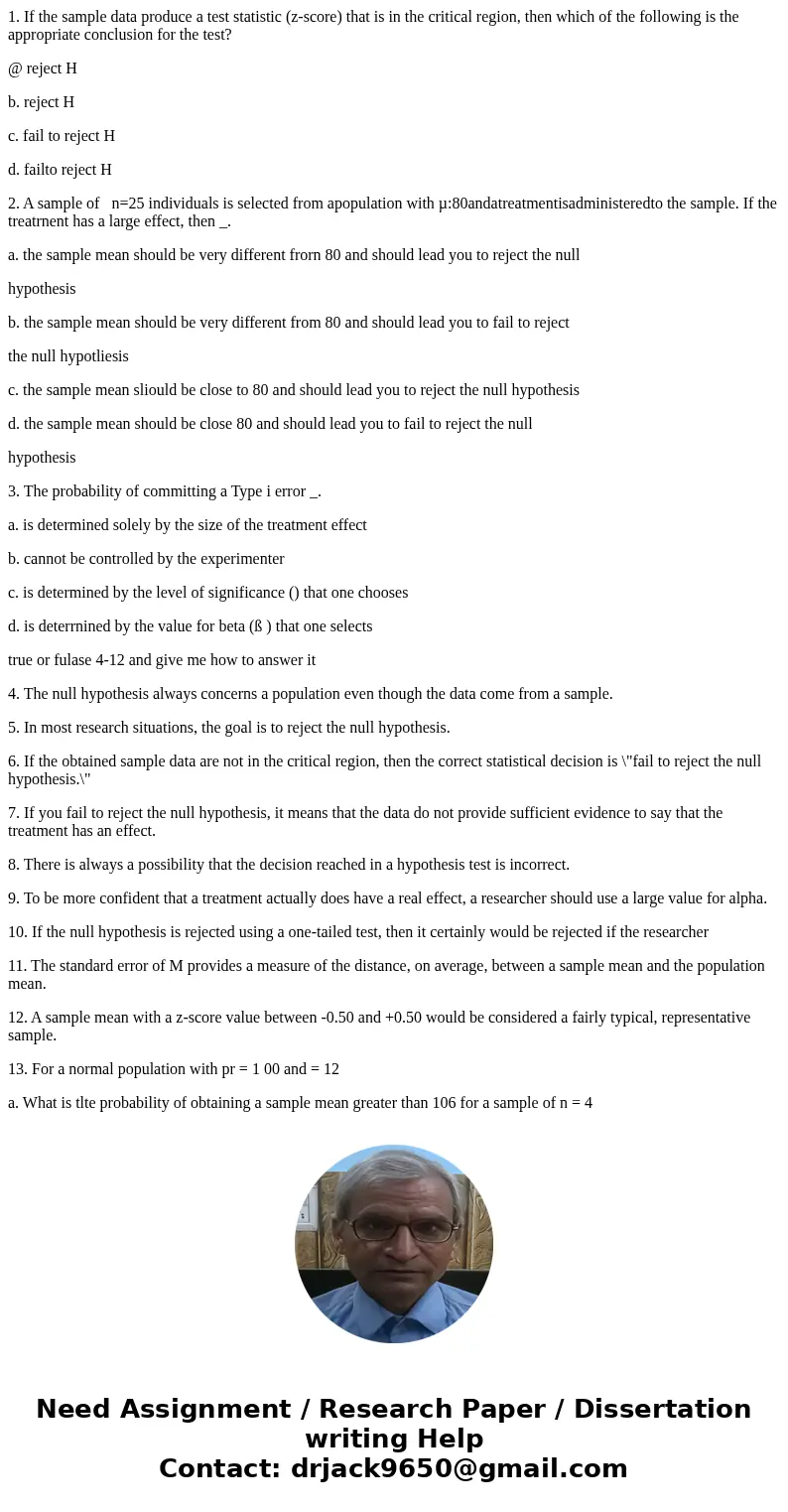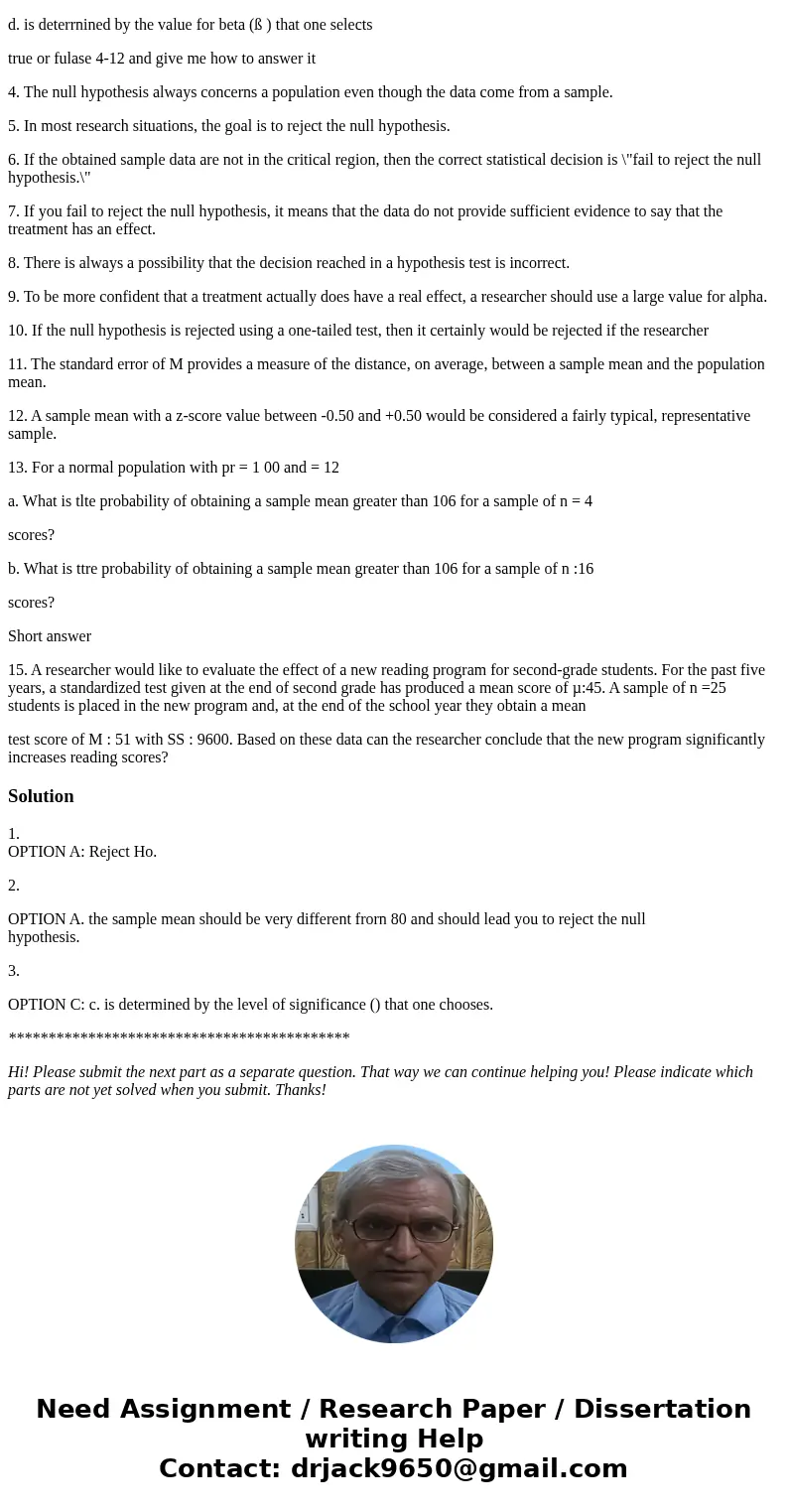1 If the sample data produce a test statistic zscore that is
1. If the sample data produce a test statistic (z-score) that is in the critical region, then which of the following is the appropriate conclusion for the test?
@ reject H
b. reject H
c. fail to reject H
d. failto reject H
2. A sample of n=25 individuals is selected from apopulation with µ:80andatreatmentisadministeredto the sample. If the treatrnent has a large effect, then _.
a. the sample mean should be very different frorn 80 and should lead you to reject the null
hypothesis
b. the sample mean should be very different from 80 and should lead you to fail to reject
the null hypotliesis
c. the sample mean sliould be close to 80 and should lead you to reject the null hypothesis
d. the sample mean should be close 80 and should lead you to fail to reject the null
hypothesis
3. The probability of committing a Type i error _.
a. is determined solely by the size of the treatment effect
b. cannot be controlled by the experimenter
c. is determined by the level of significance () that one chooses
d. is deterrnined by the value for beta (ß ) that one selects
true or fulase 4-12 and give me how to answer it
4. The null hypothesis always concerns a population even though the data come from a sample.
5. In most research situations, the goal is to reject the null hypothesis.
6. If the obtained sample data are not in the critical region, then the correct statistical decision is \"fail to reject the null hypothesis.\"
7. If you fail to reject the null hypothesis, it means that the data do not provide sufficient evidence to say that the treatment has an effect.
8. There is always a possibility that the decision reached in a hypothesis test is incorrect.
9. To be more confident that a treatment actually does have a real effect, a researcher should use a large value for alpha.
10. If the null hypothesis is rejected using a one-tailed test, then it certainly would be rejected if the researcher
11. The standard error of M provides a measure of the distance, on average, between a sample mean and the population mean.
12. A sample mean with a z-score value between -0.50 and +0.50 would be considered a fairly typical, representative sample.
13. For a normal population with pr = 1 00 and = 12
a. What is tlte probability of obtaining a sample mean greater than 106 for a sample of n = 4
scores?
b. What is ttre probability of obtaining a sample mean greater than 106 for a sample of n :16
scores?
Short answer
15. A researcher would like to evaluate the effect of a new reading program for second-grade students. For the past five years, a standardized test given at the end of second grade has produced a mean score of µ:45. A sample of n =25 students is placed in the new program and, at the end of the school year they obtain a mean
test score of M : 51 with SS : 9600. Based on these data can the researcher conclude that the new program significantly increases reading scores?
Solution
1.
OPTION A: Reject Ho.
2.
OPTION A. the sample mean should be very different frorn 80 and should lead you to reject the null
hypothesis.
3.
OPTION C: c. is determined by the level of significance () that one chooses.
*******************************************
Hi! Please submit the next part as a separate question. That way we can continue helping you! Please indicate which parts are not yet solved when you submit. Thanks!


 Homework Sourse
Homework Sourse